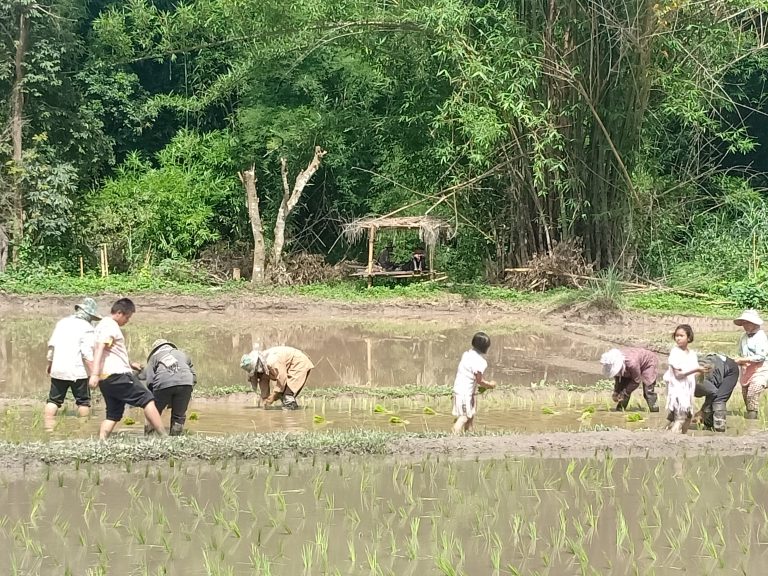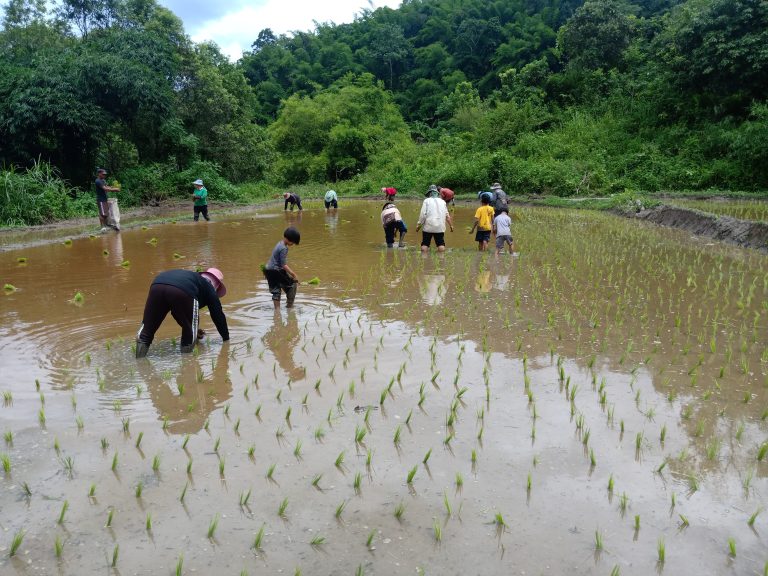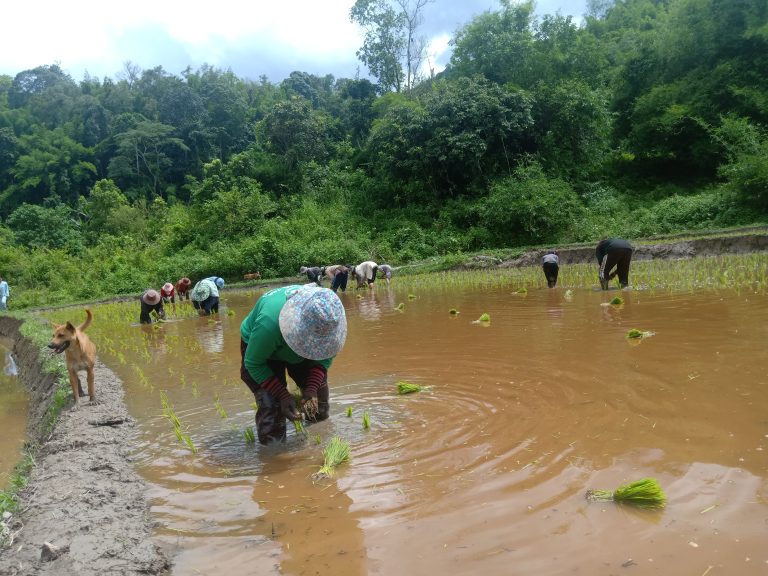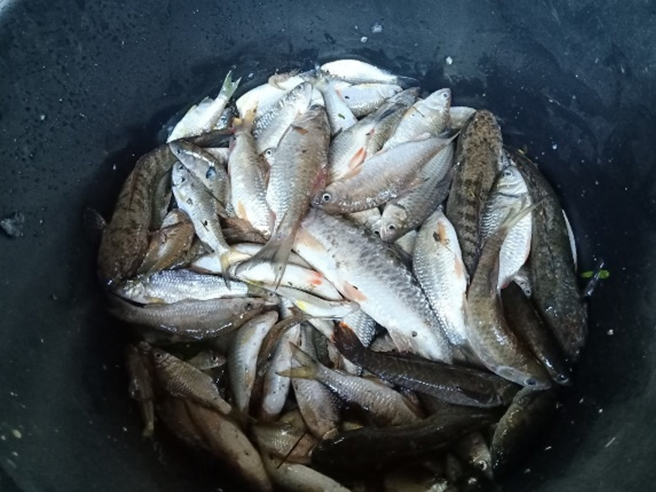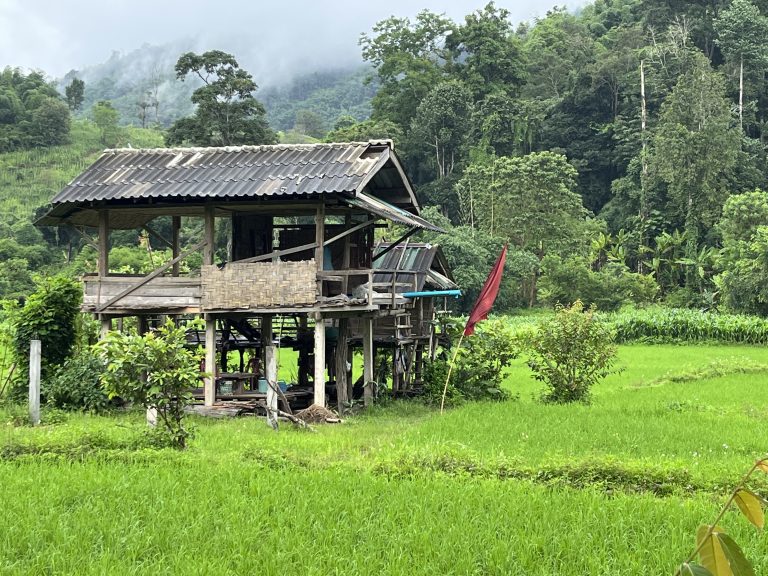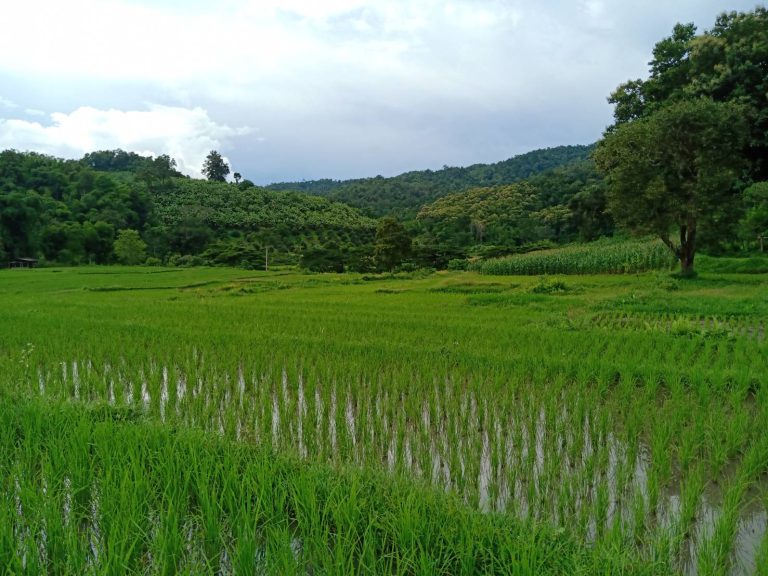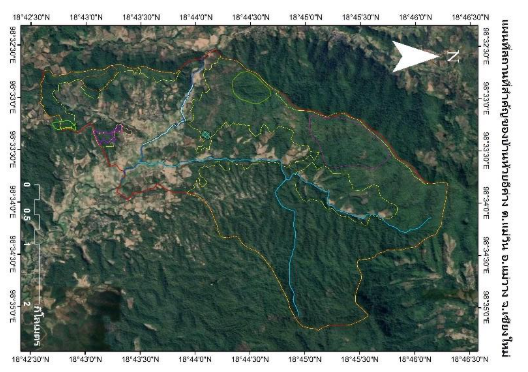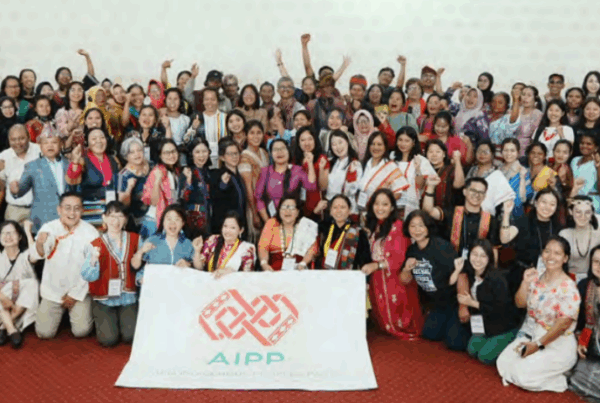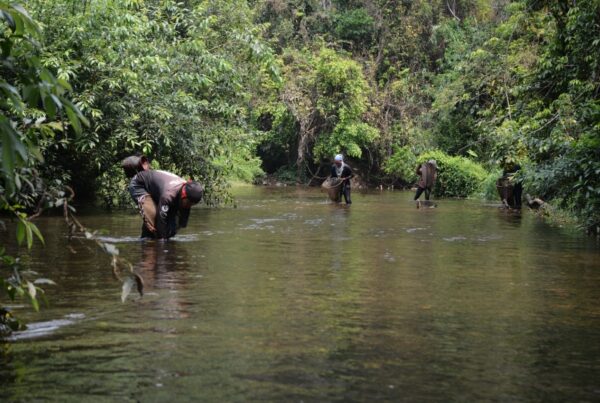As the rainy season approaches, the trees, plants, and forests seem to come back to life. The brown grass in the fields, dry from last summer, transforms into a lush green. The rice fields start filling with water from the rain, awaiting plowing, while the chirping of frogs signals the start of farming activities. The Pga Kayaw or Karen Indigenous Peoples of Ban Mae Yang Min, Si Thoi Subdistrict, Mae Suai District, Chiang Rai Province, begins sharpening essential tools such as knives, hoes, and spades. Soon, the sound of tractors echoes from house to house, preparing to plow and turn the soil in the fields. As adults prepare for farming, children get ready to learn and play in the fields, enjoying the season by playing in the water, mud, and catching fish in the rice fields.
Type: Article
Region: Asia
Country: Thailand
Theme: Traditional and local knowledge and Land and resource rights
Partner: Inter Mountain Peoples Education and Culture in Thailand Association (IMPECT)
Looking back 50 years, the sound of tractors was replaced by the wooden bells of buffaloes, herded into fields to prepare for plowing. In the past, farming activity was minimal, the rotational farming practices were applied by the indigenous Peoples to grow rice and other crops like chilies, local vegetables, pumpkins, and mountain cucumbers. However, changing circumstances made rotational farming practices impractical. The older generation had to find suitable land for farming because their rice supply was insufficient. They worked together to farm with their hands and hoes, starting with finding an area, locating a water source, digging trenches, building rice fields, and preparing buffalo for plowing. Before doing the actual work in the farm, buffalo were trained to plow. Grandmothers recall how children loved this time, preparing the land by using the natural ways to get rid of the grass. It was also the time for the frogs to lay eggs and small fish to appear.
As the time to plow the fields approaches, women and children prepare to catch fish in the fields. To do this, we use bamboo scoops called “Ae Sae,” a traditional tool passed down through generations. The catch can vary, with both small and large fish available, depending on individual preferences. In addition to minnows and tadpoles, the fields are home to larger fish, such as Dwarf snakehead fish and eels. Catching fish in the rice fields requires specific skills unique to each person. There are also field crabs and tadpoles, the latter being dragonfly larvae. Whether there will be enough rice to eat this year depends heavily on the success of this rice farming season. Thus, every family member must contribute as much as possible.
Type: Type
Region: Region
Country: Country
Theme: Theme
Partner: Partner name
Tags: Tag one, Tag two
Nowadays, with increased knowledge of technology and science, traditional farming methods have become challenging and slow. The use of chemicals in rice fields to combat pests like the snails has impacted aquatic life, reducing their numbers. The younger generation is less interested in joining their parents in the rice fields due to the lack of activities and the decline in fish populations. Childhood experiences from 20 years ago are now rare, sometimes shared as stories by adults. It would be wonderful if traditional farming could continue without affecting the livelihood and survival of families.
